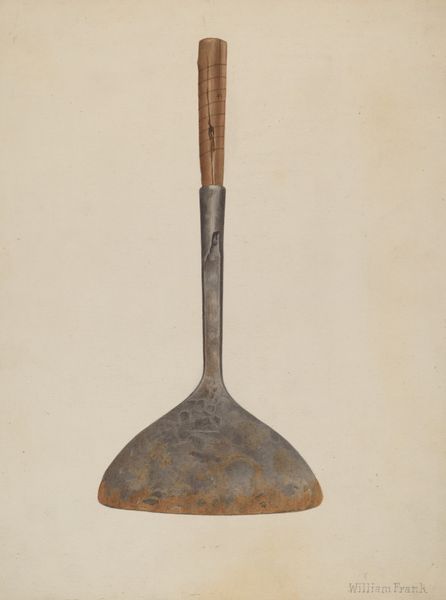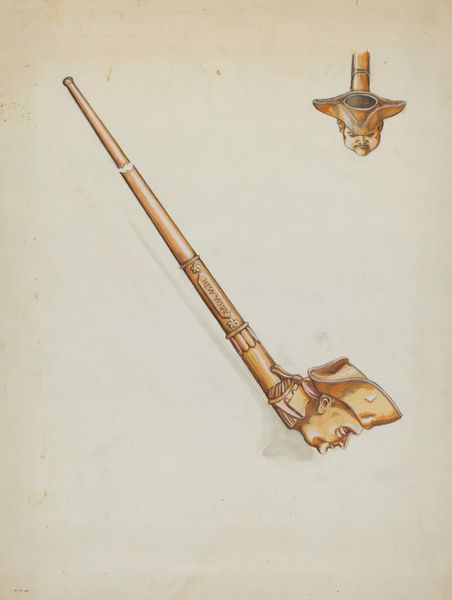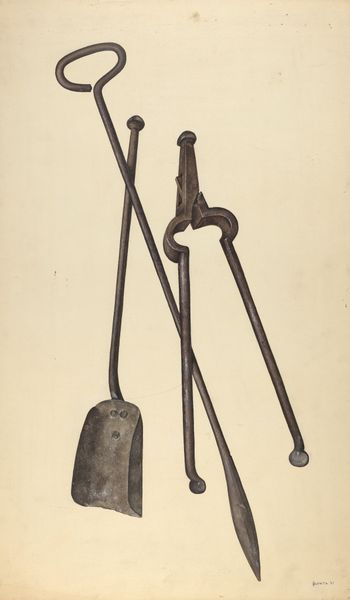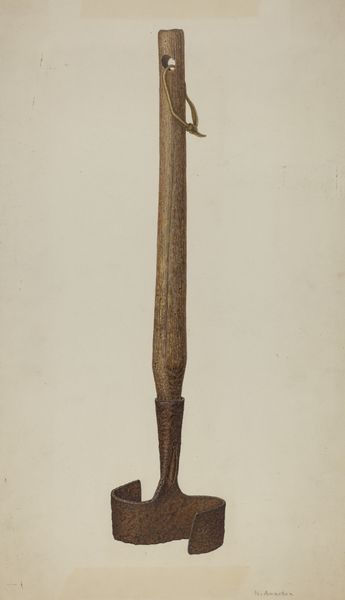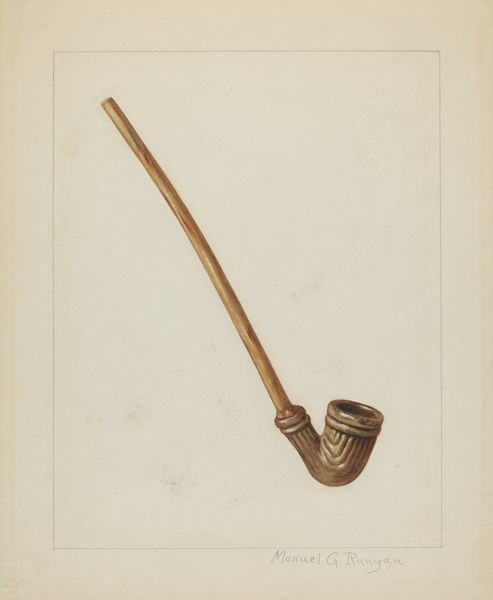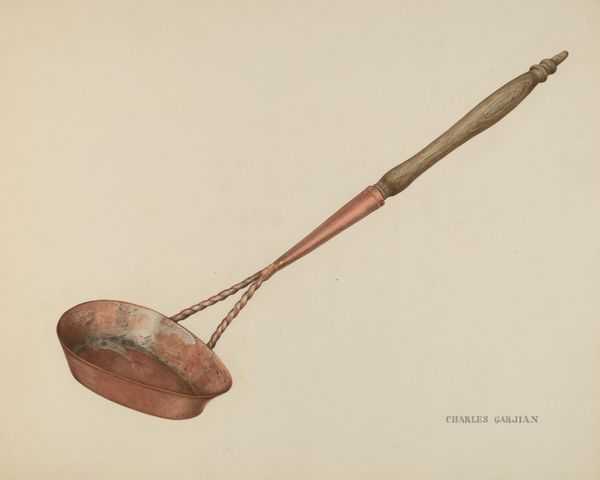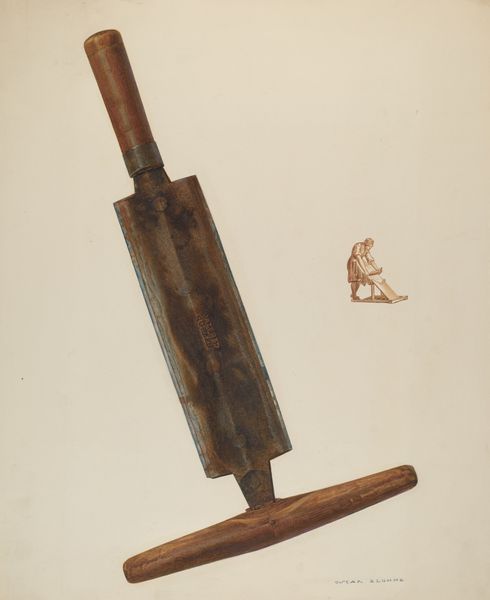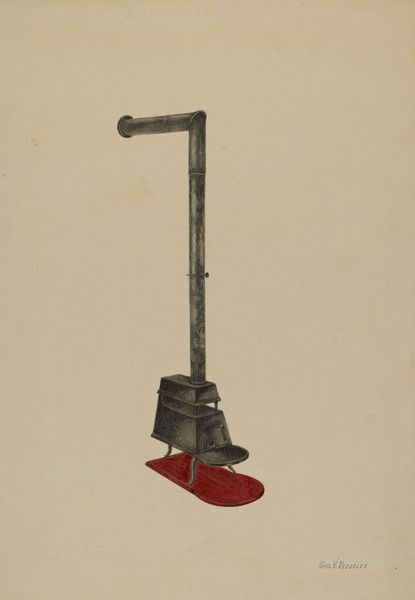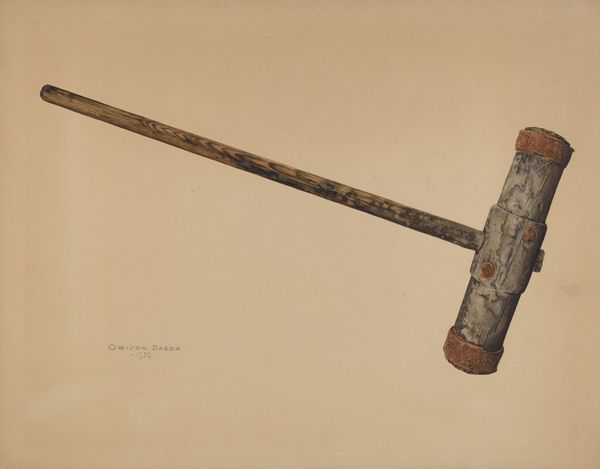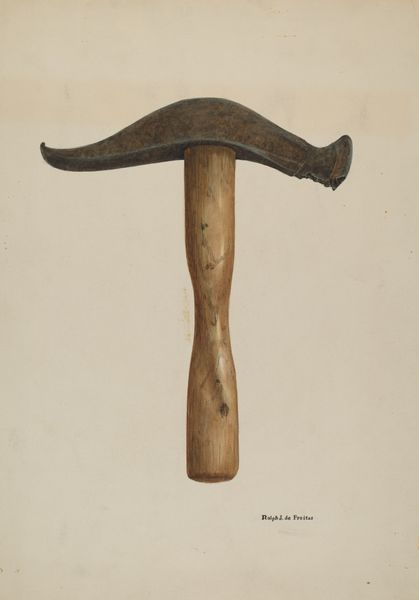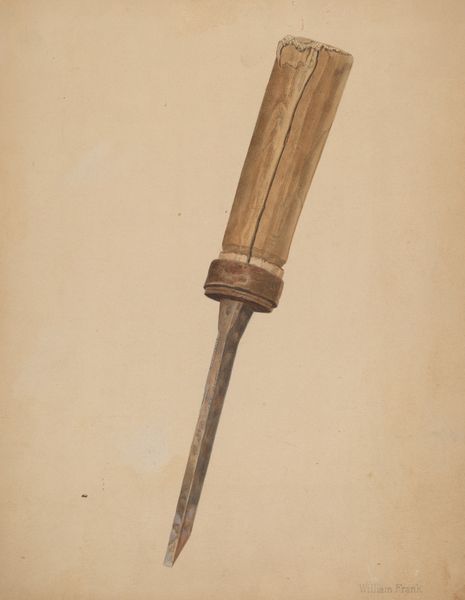
drawing, watercolor
#
drawing
#
watercolor
#
realism
Dimensions: overall: 46 x 35.8 cm (18 1/8 x 14 1/8 in.)
Copyright: National Gallery of Art: CC0 1.0
Editor: This is Archie Thompson’s "Wooden Spade," made in 1938, with watercolor and drawing. It's quite a straightforward depiction, almost like a technical diagram. There's the full spade, and then a sort of cross-sectional view. I'm struck by the simple lines and the attention to the wood grain. What stands out to you? Curator: Notice the careful attention Thompson gives to the orthogonal structure, that careful rendering of depth. He's using color to differentiate the components of the tool: handle, blade, and reinforced edge. But how do these individual elements contribute to the work as a unified whole? Editor: It makes me think about the importance of simple tools, and of manual labor...like maybe about The Great Depression since it was made in 1938. Curator: While the spade alludes to manual labor, let us observe how Thompson translates a 3-dimensional, utilitarian object into a 2-dimensional artistic study. What semiotic relationships emerge? Consider how the artist employs line and shade to define forms and express textures. Editor: I see what you mean! The texture in the wood really does create depth in an unexpected way. It is so simple, but very elegant. Curator: Precisely. The seeming simplicity is a construct born from a keen compositional eye. Editor: I hadn’t considered how much thought went into making this. Curator: This exemplifies the ability of art to distill an object to its most essential forms, a quiet meditation on structure and function, don't you think? Editor: I do now! Seeing this "Wooden Spade" as a semiotic expression has changed my perspective completely. Curator: Yes, and the closer you look, the more there is to appreciate about the composition of color, line and form that create the whole.
Comments
No comments
Be the first to comment and join the conversation on the ultimate creative platform.
